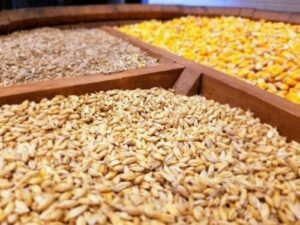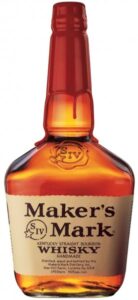While the legal definition of bourbon says that it must contain at least 51% corn, what distillers do with the other 49% is what separates one brand from another. Of course the yeast strain and barrel specifications impart distinct flavors as well, but for this article, we will focus strictly on the grain recipes of bourbon, also known as the mash bills.
Most bourbons use corn, malted barley and either rye or wheat in the recipe. Typically, corn will fall around 60-75%, malted barley around 5-12%, and then the rest will comprise of one of the flavoring grains mentioned above.
So what’s the difference between the two? That’s what we’re about to talk about, as well as some other less traditional mash bills like four grain and others.
If you think of the secondary flavor grains in terms of bread, it might help you understand the vast differences between the two. Rye bread is spicy, vibrant and earthy, while wheat bread is sweet, nutty and softer. The same can be applied here with bourbon.
———————————————
Rye

Most bourbons on the market today use rye as the secondary flavoring grain because it gives the spirit those spicy, peppery, bold notes that make it so distinct.
The rye plays well with the sweetness of the corn, and it tends to make for a long finish toward the back of the tongue.
It’s sharp, it’s hot, and it has nice peppery notes that can even be detected through smell.
Popular rye mash bills include bourbons like Old Forester, Woodford Reserve, Jim Beam, Buffalo Trace, Wild Turkey, Four Roses, Blanton’s, Michter’s, Bulleit and many more.
———————————————
Wheat

Mash bills using wheat as the secondary grain tend to be smoother, sweeter, more floral and even nuttier.
The flavor bursts at the front of the tongue and onto the sides, but it tends to dissipate as it gets further toward the back of your mouth.
There is typically less burn and less spice, and the bourbon will linger more on the sweet side with notes of softer baking spices, baked fruit and lots of caramel, toasted marshmallow and vanilla.
Popular wheated mash bills include Pappy Van Winkle, Maker’s Mark, W.L. Weller, Larceny, Old Fitzgerald and Rebel Yell.
———————————————
Four Grain
Suppose a distiller wants the best of both worlds and doesn’t want to decide between wheat and rye. Enter four grain bourbon, which uses corn, malted barley and both rye and wheat as the flavoring grains.
Many craft distilleries around the U.S. have experimented with four grain releases, and results have been hit and miss. When it’s done well, however, it really produces a whiskey that is both spicy and sweet, sharp and velvety. In the last five years, larger distilleries have attempted four grain expressions, including Buffalo Trace with its award-winning and highly sought-after E.H. Taylor Four Grain release.
Popular brands making a four grain mash bill include E.H. Taylor, Hudson Whiskey, Jeptha Creed, Koval, Rabbit Hole and Laws Whiskey House, among others.
———————————————
Rye Whiskey, Wheat Whiskey, Corn Whiskey & Malt Whiskey
While rye whiskey is the most popular and widely produced category here — and was made long before bourbon was a thing — there are other styles of whiskey named after the predominant grain in the mash bill.
We mentioned earlier that bourbon’s legal definition included a mash bill of at least 51% corn. The same goes for these: Rye whiskey must contain at least 51% rye; wheat whiskey must contain at least 51% wheat; malt whiskey must contain at least 51% malted barley; and corn whiskey, an early American-made product, must contain at least 80% corn.
Most bourbon distilleries make a rye whiskey, but very few make the others. Woodford Reserve and Heaven Hill are two exceptions. Woodford Reserve recently came out with rye whiskey, wheat whiskey and malt whiskey expressions, and Heaven Hill makes Mellow Corn, a corn whiskey, as well as Bernheim, a wheat whiskey.

